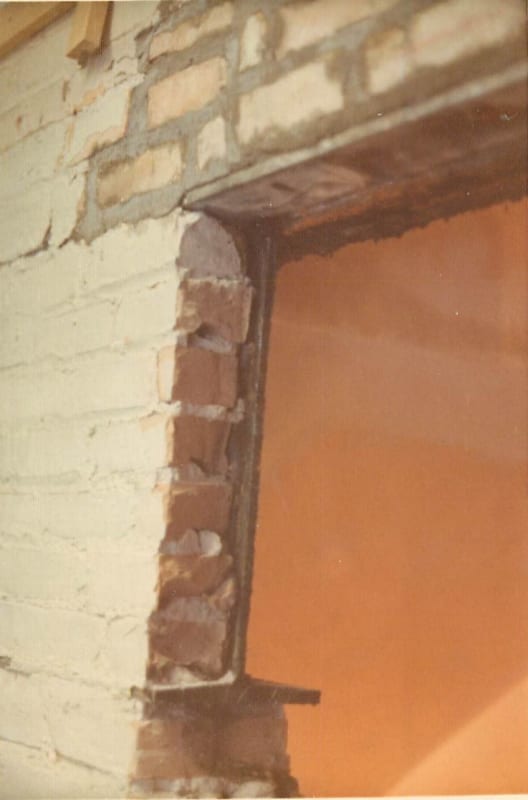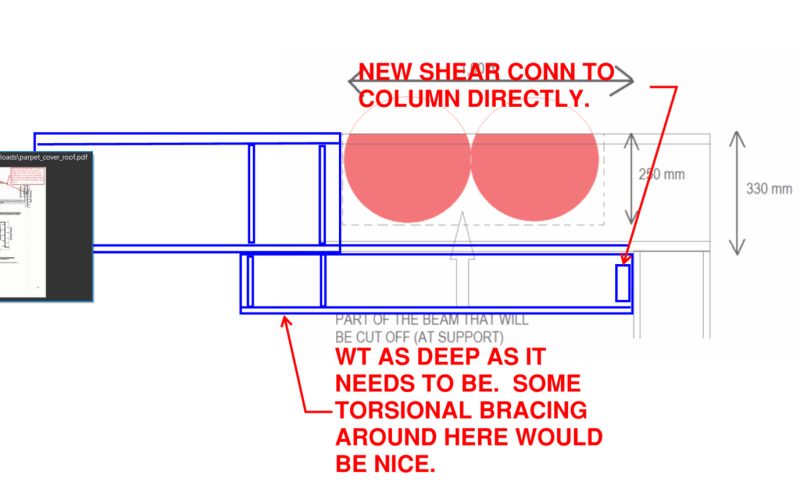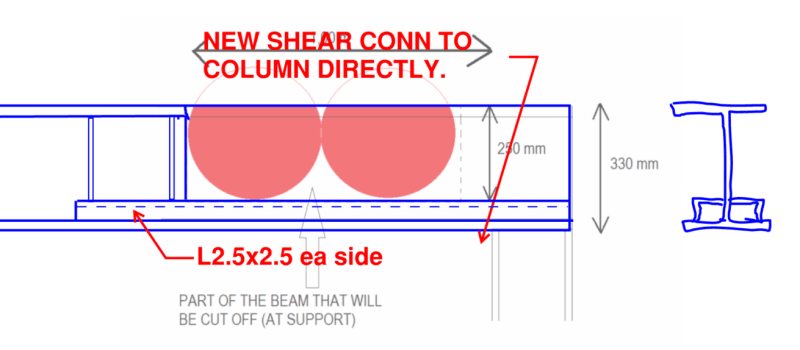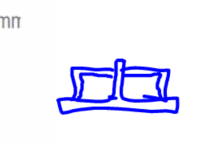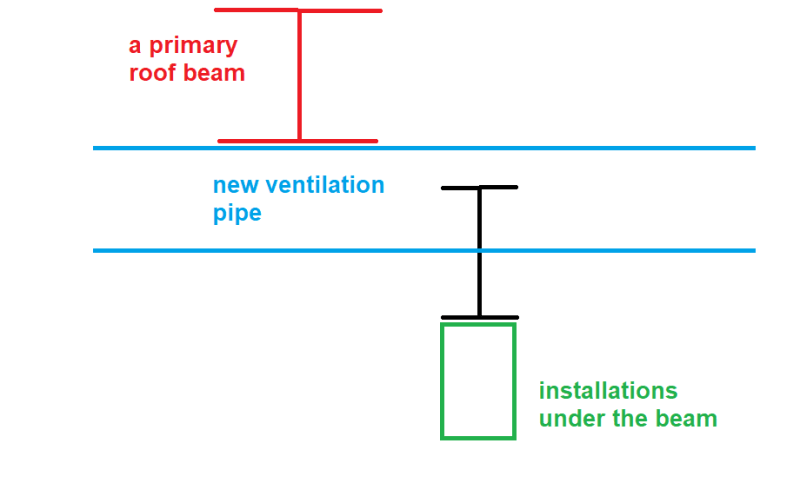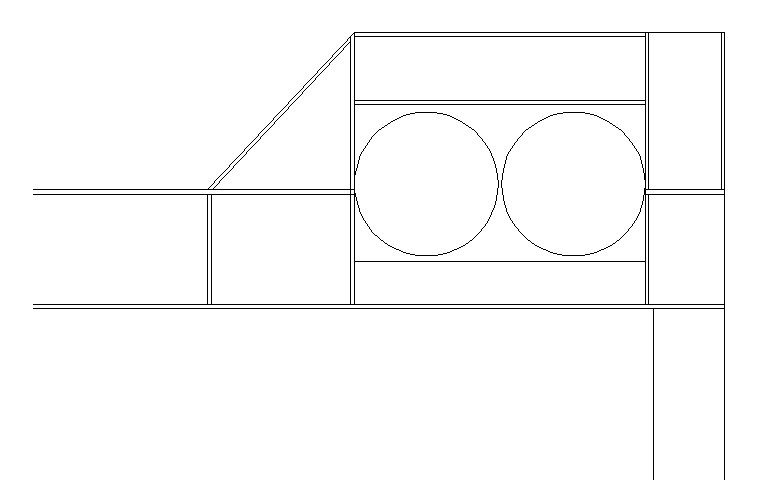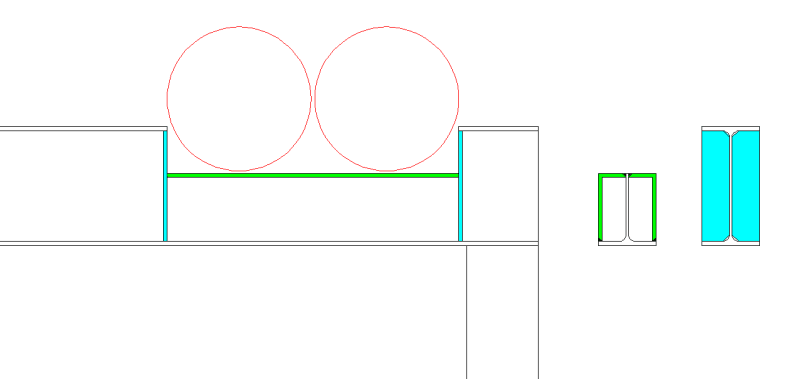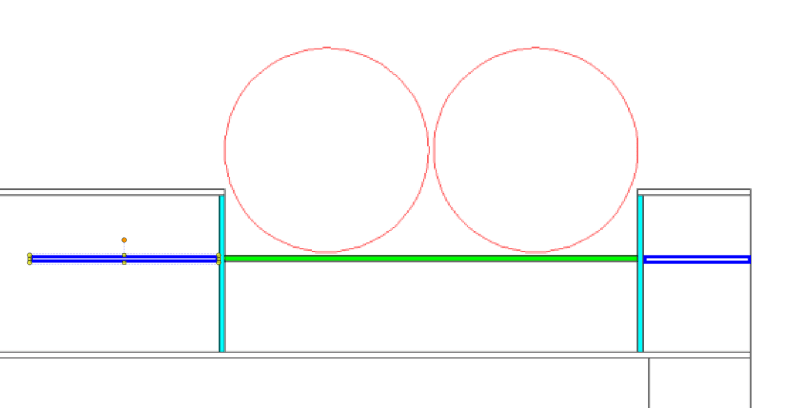Hi,
How would you strenghten a steel beam near the support after cutting half of it off (as shown in image)?
The beam is continuous (10 m span) and it is only loaded with self weight and some installations (1 kN/m).
The contractor wants to install some new ventilation pipes that will go through existing steel beam near
the support where shear forces are the largest. How would you strenghten/reinforce it? What would you suggest?
Thanks.

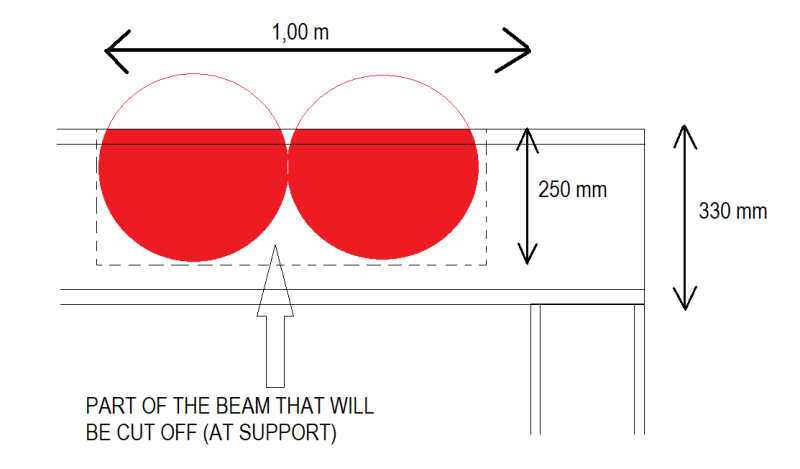
How would you strenghten a steel beam near the support after cutting half of it off (as shown in image)?
The beam is continuous (10 m span) and it is only loaded with self weight and some installations (1 kN/m).
The contractor wants to install some new ventilation pipes that will go through existing steel beam near
the support where shear forces are the largest. How would you strenghten/reinforce it? What would you suggest?
Thanks.



